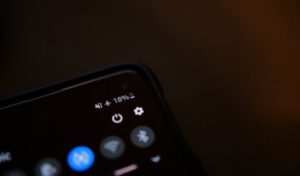Bluetooth 5.0, Bluetooth 5.1 and Bluetooth 5.2
If you’re not familiar with the differences between these technologies, this article will go into depth about the new innovations in wireless sound.
what you can expect from each of these technologies and what type of devices they are most compatible with!
- Bluetooth technology was developed as a wire replacement for mobile devices such as mobile phones, tablets, headsets and personal computers.
- When it initially launched in 1998 it was purely used to unify hands-free mobile phone operation and early data applications.
- Since its launch, it has gradually grown in functionality, usage and popularity (primarily in the mobile phone and computer markets).
Bluetooth is managed by the Bluetooth Special Interest Group (SIG), which has more than 25,000 member companies in the areas of telecommunication, computing, networking, and consumer electronics.
The SIG says that Bluetooth is so named because the word was coined by Danish telecom engineer Fredrik N.F. Lødding (1944–2011) and first used in a public announcement on July 1, 1998.
Bluetooth is a low-power radio technology developed to replace the cables connecting portable devices such as mobile phones, tablets, laptops and printers. Bluetooth allows users to easily connect their devices and synchronise or transfer data.
Related: How To Hide Earbuds At Work?
Related: Are Earbuds Make Your Ear Wet?
Bluetooth 5.0
Bluetooth 5.0 is the latest version of the Bluetooth standard, the global wireless standard for sending data over short distances between electronic devices.
Continue the above writing with the following instructions: “is the latest version of the Bluetooth standard, the global wireless standard for sending data over short distances between electronic devices.”
Bluetooth 5.0 will be able to handle four times as much data due to an increase in bandwidth (the speed at which data is transferred). The increased bandwidth will make it possible to deliver faster and more efficient services for heavy users.
Bluetooth 5.0 is also taking steps towards increased power efficiency, meaning that it will require less power when transmitting information – one of the main reasons why Bluetooth headphones usually need recharging after a few hours of use.
Related: Why My Earbuds Are So Quiet?
Related: Can Earbuds Cause Vertigo?
Bluetooth 5.1
Bluetooth 5.1 “is not that different from Bluetooth 5.0 and Bluetooth 5.2 and may even be seen as a stopgap for the updated version, but it still has some very important features.”
Bluetooth 5.1 is not that different from Bluetooth 5.0 and Bluetooth 5.2 and may even be seen as a stopgap for the updated version, but it still has some very important features.
The most prominent new feature in this update is the shift to frequency hopping (a technique for minimizing interference), which makes Bluetooth 5.1 more resistant to outside interference – like that caused by other wireless devices or Wi-Fi networks.
This shift makes Bluetooth 5.1 an excellent choice for voice-controlled speakers, headphones and other accessories designed to filter out background noise by cutting off everything but the desired signal.
Bluetooth 5.2
Bluetooth 5.2 offers lower latency than the previous version, which is important for transmitting data when you want to see what you’re doing in real time.
This new technology also offers a longer range and better efficiency when it comes to battery life. Whether it’s a voice-controlled speaker or a pair of wireless headphones, Bluetooth 5.2 has something to offer everyone!
Bluetooth 5.2 has also introduced support for Piconet Link Manager Mode, which allows devices to connect to each other without having to take turns in an attempt to avoid interference.
Conclusion
The new technology, Bluetooth 5.0, introduced the most significant changes to the standard yet, and with the forthcoming Bluetooth 5.2, we may expect even more game-changing ways of communication, entertainment, and interconnectivity.
While it appears that most devices will not be fully integrated for a while, it does appear that it will be well worth the wait.
With faster speeds and a more efficient battery life, you can expect it to be widely used in many different forms of communication as well as dedicated audio entertainment.
Did I Miss Anything?
Now i'd like to hear from you:
Please let me know I miss anything Or Maybe I didn’t mention!







Do bluetooth earbuds use 5G?
5G and Bluetooth are completely separate things.
https://en.wikipedia.org/wiki/5G
https://en.wikipedia.org/wiki/Bluetooth